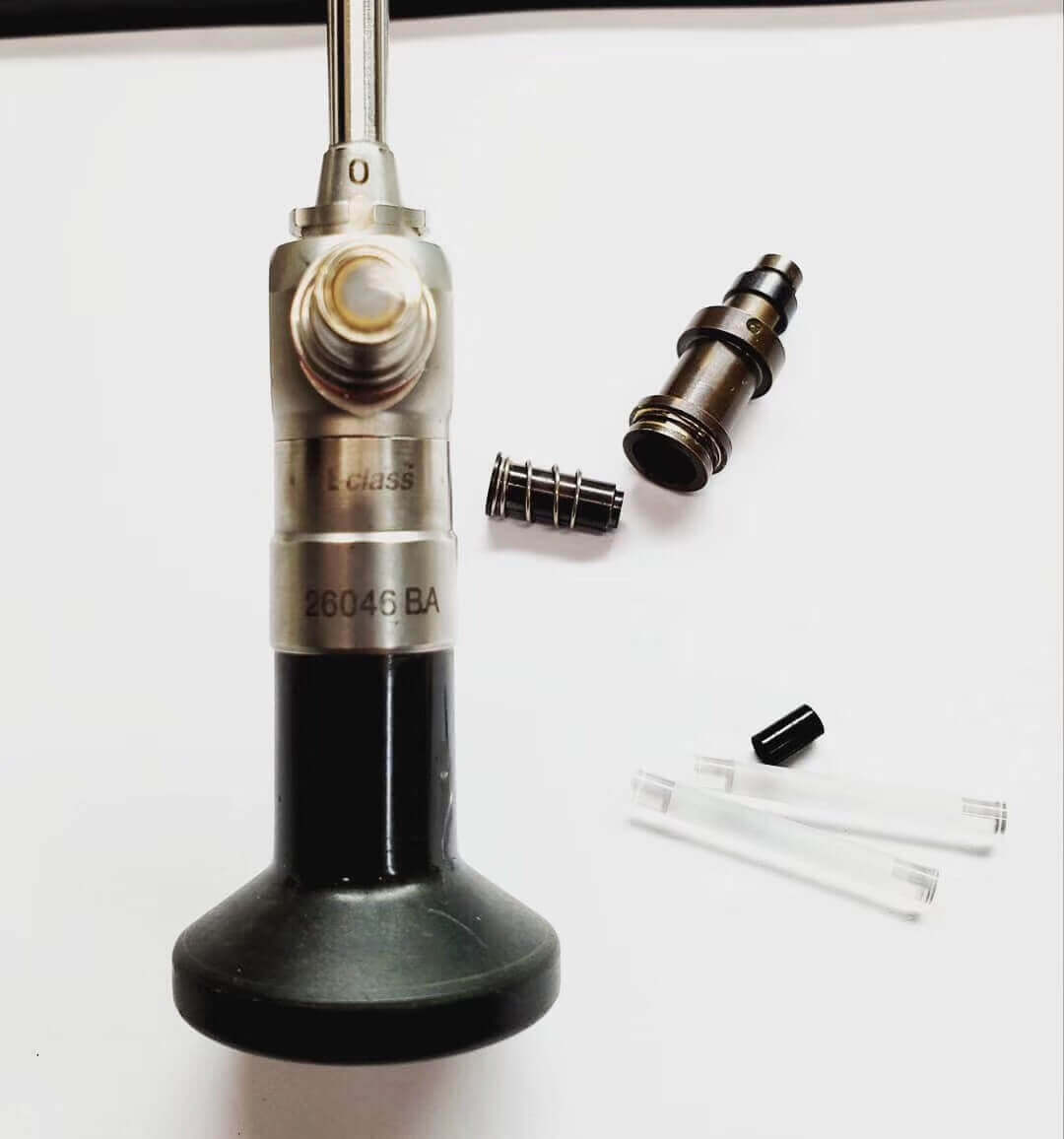醫療器械維修7條小須知
7 tips for medical device maintenance
1. 親自重復故障(如果可以重復的話),不輕信用戶或第三者的口述或轉述。仔細觀察,不輕信用戶的口述,尤其是第三者的轉述。有的操作者為了推脫自己的責任,會說儀器自己突然...,自己什么也沒動,等等.這些都是可以理解的。工程師要會妥善處理。
1. Repeat the fault in person (if it can be repeated), and don't trust the oral or retelling of users or third parties. Observe carefully and don't believe the oral statements of users, especially those of third parties. Some operators, in order to shirk their responsibility, will say that the instrument itself suddenly... Did not move anything, etc. all these are understandable. The engineer will handle it properly.
2. 先外部,后內部。不要動不動就打開機殼,沒有初步的判斷和排除就喜歡鋪開攤子絕不是老手的做法。指望打開機殼看哪里有斷線或明顯故障之處,純粹是在碰運氣,即使好運也不可能每次都這樣。約有50%故障是由外部環境或操作、清潔等造成的。如是否關機時間長了?晝夜溫差是否很大?儀器放置的位置是否離電梯間很近? 儀器附近還有什么儀器在使用?計算機設置是否正確?等等。

2. Outside first, then inside. Don't always open the shell, without preliminary judgment and exclusion like to spread out the stall is not an old way. Looking to open the case to see where there is a broken line or obvious fault, is pure luck, even if good luck is not always like this. About 50% of the failures are caused by external environment or operation, cleaning, etc. For example, whether the shutdown time is long, whether the temperature difference between day and night is large, whether the location of the instrument is close to the elevator hall, what instruments are used near the instrument, whether the computer settings are correct, etc.
3. 先電源,后主機;先附件,后主機。應先檢查電源是否穩定、負載是否過重、地線是否良好、電極等附件是否良好和正常、各接口是否正確等。
3. First power supply, then main engine; first accessories, then main engine. Check whether the power supply is stable, whether the load is too heavy, whether the ground wire is in good condition, whether the accessories such as electrodes are in good condition and normal, and whether the interfaces are correct.
4.充分利用儀器面板上各種按鍵、顯示屏幕和操作 或維修程序等,作些排除,這需要極其熟悉結構。
4. Make full use of all kinds of buttons, display screen and operation or maintenance procedures on the instrument panel to make some exclusion, which requires extremely familiar with the structure.
5. 了解用戶的操作習慣、操作人員結構和水平,科室經濟情況等也會對維修有很大幫助。如可推斷清潔保養得如何,是否有欲更新的想法(否則無論怎么修都不會說好)等。如筆者碰到一臺血球計數儀,前任幾個工程師無數次維修,持續二年,還換過新機器,但不到
5. Understanding the operating habits of users, the structure and level of operators, and the economic situation of the Department will also be of great help to the maintenance. If you can infer how well the cleaning and maintenance is, whether you want to update the idea (otherwise, no matter how you repair it, it will not be agreed). For example, the author came across a blood cell counter, several former engineers repaired it for two years, and replaced it with a new machine
半年又重復出現故障,麻煩不斷。我接手后有一次接報修,趕到時屏幕暗的,問醫生是這臺嗎?醫生回答是的,且上前按電源開關。按后無反應,就又按一下,機器重啟了。原來儀器有屏幕保護功能,該科室無專人保管使用,使用者用好就走,后一使用者一看屏幕暗的,就開開關。每天數百次開關電源,怎有不壞之理?修好后,我寫了一個條子貼在儀器前,寫明若發現屏幕暗,先隨意按一下任何鍵,不亮再開電源開關。從此就再也沒這么麻煩了。
Six months and repeated failures, trouble. After I took over, I received a report for repair. When I arrived, the screen was dark. I asked the doctor if it was this one. The doctor answered yes and went forward to press the power switch. If there is no response after pressing, press again, and the machine restarts. The original instrument has the function of screen protection. There is no special person in the Department to keep and use the instrument. The user can leave after using it well. The later user will turn on the switch when the screen is dark. After repairing, I wrote a note and pasted it in front of the instrument, saying that if the screen is dark, press any key at will, and then turn on the power switch. There's no more trouble.
6. 不輕易更換原來儀器上的元器件和板子、管道等,因為有些元器件與板子、軟件數據相關。 更不能靠不停地換板子和部件來縮小故障源,否則招一民工教教即會(目前此類維修者多,既可收費又簡單)。
6. It is not easy to replace the components, boards and pipes of the original instrument, because some components are related to the board and software data. Moreover, we can't reduce the fault source by constantly changing boards and components, otherwise we can recruit a migrant worker for teaching (at present, there are many such maintenance workers, which can be charged and simple).
7. 必要時儀器或工程師要承擔責任,背“黑鍋”。若責任在科室或使用者,以后更難打交道了。出于各種目的,也會出現:有人故意設置故障。
7. When necessary, the instrument or engineer should bear the responsibility and bear the "black pot". If the responsibility lies in the department or user, it will be more difficult to deal with in the future. For a variety of purposes, there will also be: someone deliberately set the fault.



 公司:匠仁醫療設備有限公司
公司:匠仁醫療設備有限公司